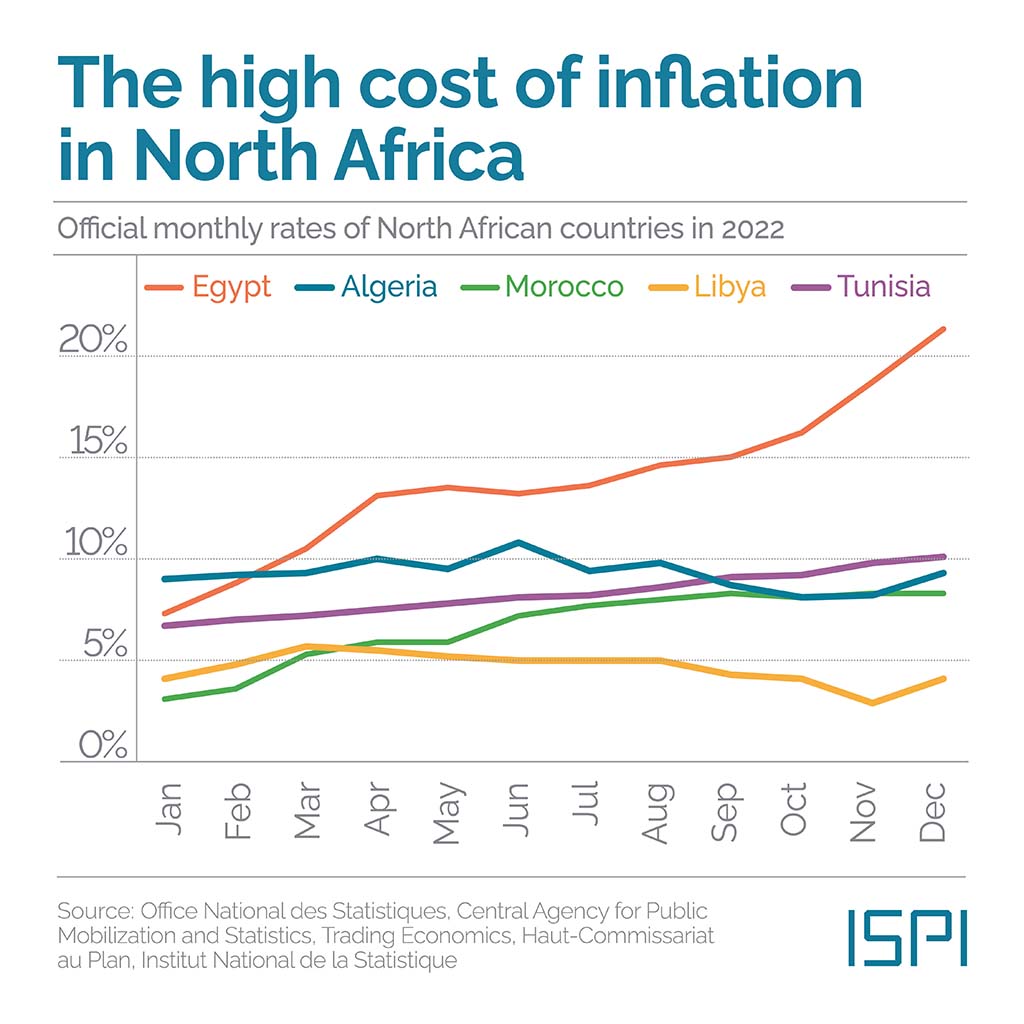Analysis of United States Immigration Policy and its Intersection with Sustainable Development Goals
H3: SDG 16: Peace, Justice, and Strong Institutions – The Rule of Law and Political Representation
Recent discourse highlights a critical intersection between immigration, political representation, and the integrity of institutional processes, aligning with the principles of SDG 16. The framework of this goal, which emphasizes accountable and inclusive institutions, is challenged by practices that could alter political apportionment based on non-citizen populations.
- A statement from U.S. Representative Yvette Clarke indicated a need for migrants to increase district population figures for redistricting purposes. This raises questions regarding SDG 16’s target for responsive, inclusive, and representative decision-making.
- Calls by municipal leaders, such as Los Angeles Mayor Karen Bass, for the cessation of federal immigration law enforcement within city limits point to a conflict between local objectives and national legal frameworks. This challenges the uniform application of the rule of law, a cornerstone of SDG 16.
H3: SDG 8: Decent Work and Economic Growth – Labor Market Dynamics and Employment
An analysis of recent employment data reveals significant shifts in labor market dynamics, impacting progress toward SDG 8, which aims for full, productive employment and decent work for all. The data indicates a divergence in employment growth between native-born and foreign-born workers, correlated with changes in administrative policy.
- Previous Administration (Biden): In January, annual job growth among foreign-born workers was reported to be nearly 1.2 million higher than that for native-born Americans.
- Current Administration (Trump): By June, this trend had reversed. Native-born Americans experienced annual employment gains of approximately 1.4 million more jobs than foreign-born workers. The annual increase in employment for native-born Americans reached over 1.7 million, while the increase for foreign-born workers was under 400,000.
These trends suggest that immigration enforcement policies may have a direct and measurable impact on the distribution of employment opportunities, a key consideration for achieving the inclusive economic growth envisioned by SDG 8.
H3: SDG 1: No Poverty & SDG 10: Reduced Inequalities – Real Wages and Economic Well-being
Economic indicators related to wages and purchasing power offer insight into progress on SDG 1 (No Poverty) and SDG 10 (Reduced Inequalities). The data suggests a correlation between prevailing economic and immigration policies and the financial stability of the average worker.
- Under the Biden administration, while nominal weekly paychecks rose by nearly 20%, rapid price increases resulted in a net loss of approximately 4% in real purchasing power.
- Under the Trump administration, a reversal of this trend has been observed, with the average American’s real weekly paycheck rising by about 1% in less than six months. The real median weekly paycheck is reported to be at its highest point compared to the previous administration.
Despite this recent growth in real wages, significant household debt, including $1.2 trillion in credit card debt, indicates that many households have not fully recovered from previous economic pressures, underscoring the ongoing challenge of achieving SDG 1.
H3: SDG 9: Industry, Innovation, and Infrastructure – Economic Adaptation and Technological Advancement
The debate over immigration’s role in the labor force extends to its impact on industrial strategy and innovation, directly relating to SDG 9. The argument is made that a reliance on low-skill immigrant labor may inhibit investment in technology and productivity enhancements. A shift in labor availability could, therefore, catalyze progress toward a more innovative and efficient industrial base.
The proposed sequence for economic adaptation is as follows:
- A reduction in the availability of artificially inexpensive labor through stricter immigration enforcement.
- Increased industry investment in capital and technology to compensate for labor shifts.
- Widespread adoption of automation and other productivity enhancements, particularly in sectors like agriculture.
- Resulting gains in efficiency leading to increased output and potentially lower prices for consumers.
This pathway suggests that immigration policy can act as a catalyst for achieving SDG 9’s goal of building resilient infrastructure, promoting inclusive and sustainable industrialization, and fostering innovation.
1. Which SDGs are addressed or connected to the issues highlighted in the article?
-
SDG 8: Decent Work and Economic Growth
- The article extensively discusses the economic impacts of immigration policies on the domestic labor market, including employment rates for native-born versus foreign-born workers, real wage growth, and household debt. It also touches on economic productivity and innovation as a response to changes in the labor supply.
-
SDG 10: Reduced Inequalities
- The article addresses inequalities in economic outcomes between different population groups (native-born vs. foreign-born workers). It also implicitly discusses the status and rights of migrants and the political and social inclusion of non-citizens, particularly in the context of migration policies and their humanitarian consequences.
-
SDG 16: Peace, Justice and Strong Institutions
- The article touches upon the functioning of political institutions and the rule of law. It highlights a debate on the enforcement of federal immigration laws and discusses how population counts, including non-citizens, can be used for political purposes like “redistricting,” which relates to the integrity of representative institutions.
2. What specific targets under those SDGs can be identified based on the article’s content?
-
SDG 8: Decent Work and Economic Growth
-
Target 8.2: Achieve higher levels of economic productivity through diversification, technological upgrading and innovation.
- The article suggests that removing “artificially cheap labor” will force industries to adapt through “automation and productivity enhancements,” leading to investment in technologies like AI to increase efficiency.
-
Target 8.5: By 2030, achieve full and productive employment and decent work for all women and men… and equal pay for work of equal value.
- The article directly addresses this by comparing employment growth and wage trends between native-born and foreign-born workers. It argues that certain policies have led to better employment and real wage growth for “native-born Americans” and “blue-collar workers.”
-
-
SDG 10: Reduced Inequalities
-
Target 10.2: By 2030, empower and promote the social, economic and political inclusion of all, irrespective of… origin… or other status.
- The article discusses the political inclusion of migrants through Rep. Clarke’s comment on needing them for “redistricting purposes.” It also analyzes the economic inclusion of foreign-born vs. native-born workers in the labor market.
-
Target 10.7: Facilitate orderly, safe, regular and responsible migration and mobility of people, including through the implementation of planned and well-managed migration policies.
- The article critiques what it calls “open border policies” and references a “humanitarian crisis with 11,000 migrants crowding under a bridge,” indicating a failure of well-managed migration policies. The entire piece is a commentary on the management of migration.
-
-
SDG 16: Peace, Justice and Strong Institutions
-
Target 16.3: Promote the rule of law at the national and international levels and ensure equal access to justice for all.
- This is addressed through the mention of Los Angeles Mayor Karen Bass calling on ICE to “end their enforcement of federal immigration law,” which is a direct debate on the application and promotion of the rule of law.
-
Target 16.6: Develop effective, accountable and transparent institutions at all levels.
- The statement by Rep. Yvette Clarke that she needs more people in her district “just for redistricting purposes” raises questions about the accountability and transparency of political representation and the institutions governing it.
-
3. Are there any indicators mentioned or implied in the article that can be used to measure progress towards the identified targets?
-
SDG 8: Decent Work and Economic Growth
-
Indicators for Target 8.5
- Employment Growth Rates by Population Group: The article provides specific figures that act as indicators. For example, “annual job growth among foreign-born workers was almost 1.2 million higher than job growth among native-born Americans” at one point, which later reversed to “native-born Americans seeing annual employment gains of almost 1.4 million more jobs than foreign-born workers.”
- Real Wage Growth: The article uses changes in real weekly paychecks as a direct indicator. It states that under one administration, “real weekly paychecks bought about 4 percent less,” while under another, “the average American’s real weekly paycheck has risen about 1 percent.”
- Household Debt Levels: The article mentions that “households are still in $1.2 trillion of credit card debt,” which can be an inverse indicator of economic well-being and the quality of work/pay.
-
-
SDG 10: Reduced Inequalities
-
Indicators for Target 10.7
- Qualitative Assessment of Migration Policy: The article’s description of “open border policies” versus “enforcement of U.S. laws” serves as a qualitative indicator of different approaches to migration management.
- Incidence of Humanitarian Crises at Borders: The mention of “a humanitarian crisis with 11,000 migrants crowding under a bridge” is a clear, albeit non-systematic, indicator of the failure to ensure safe and orderly migration.
-
-
SDG 16: Peace, Justice and Strong Institutions
-
Indicators for Target 16.3 & 16.6
- Public Statements by Officials on Rule of Law: The call by a mayor to “end their enforcement of federal immigration law” serves as a qualitative indicator of challenges to the uniform application of the rule of law.
- Public Statements by Officials on Institutional Purpose: A representative’s statement about needing migrants “just for redistricting purposes” is a qualitative indicator of how political institutions’ integrity and accountability are perceived and potentially utilized.
-
4. Create a table with three columns titled ‘SDGs, Targets and Indicators” to present the findings from analyzing the article.
| SDGs | Targets | Indicators Identified in Article |
|---|---|---|
| SDG 8: Decent Work and Economic Growth | Target 8.2: Achieve higher levels of economic productivity through… technological upgrading and innovation. | Implied future increase in investment in automation and AI in agriculture and other industries. |
| Target 8.5: Achieve full and productive employment and decent work for all. |
|
|
| Target 10.2: Empower and promote the social, economic and political inclusion of all. | Use of migrant population counts for political “redistricting purposes.” | |
| SDG 10: Reduced Inequalities | Target 10.7: Facilitate orderly, safe, regular and responsible migration. |
|
| Target 16.3: Promote the rule of law. | A mayor’s call to “end their enforcement of federal immigration law.” | |
| SDG 16: Peace, Justice and Strong Institutions | Target 16.6: Develop effective, accountable and transparent institutions. | A representative’s statement on needing migrants “just for redistricting purposes.” |
Source: foxnews.com







